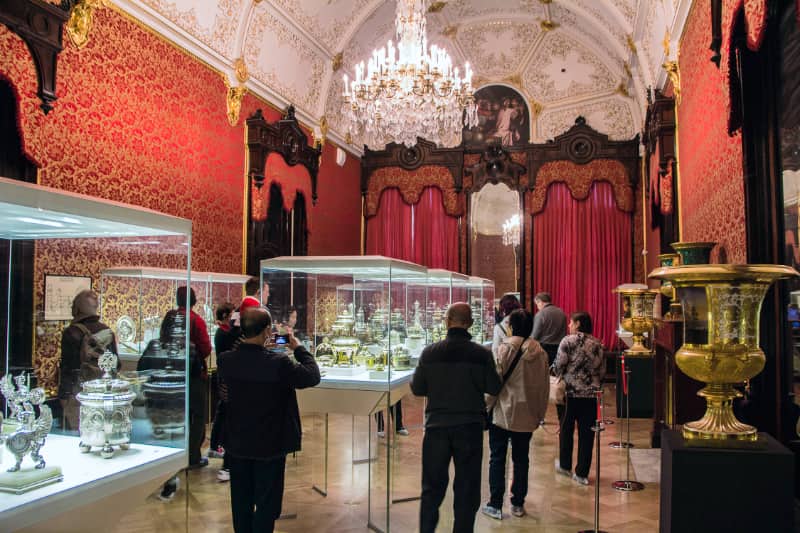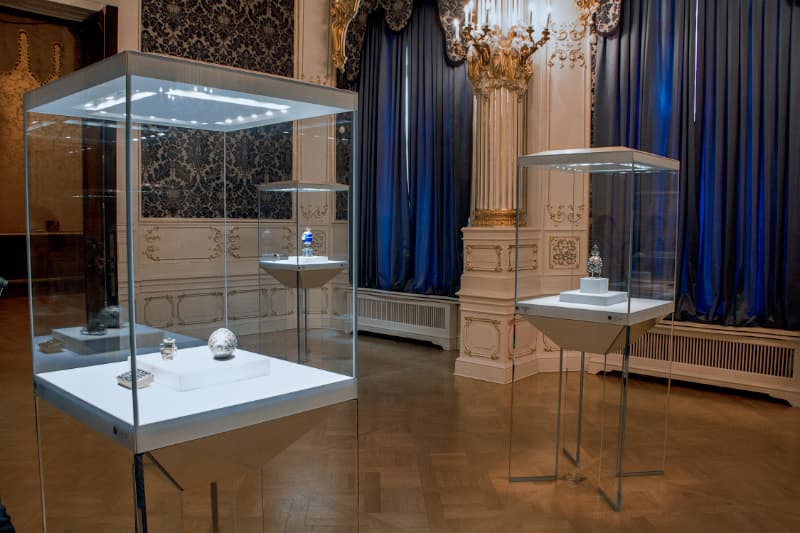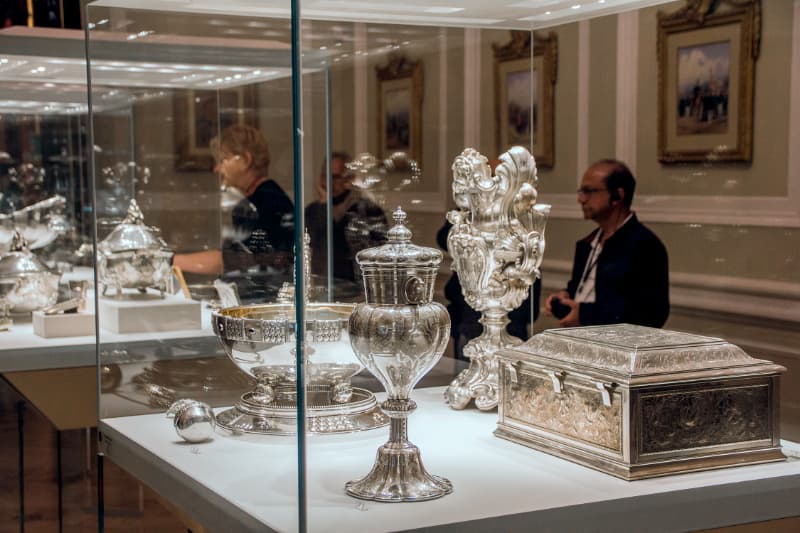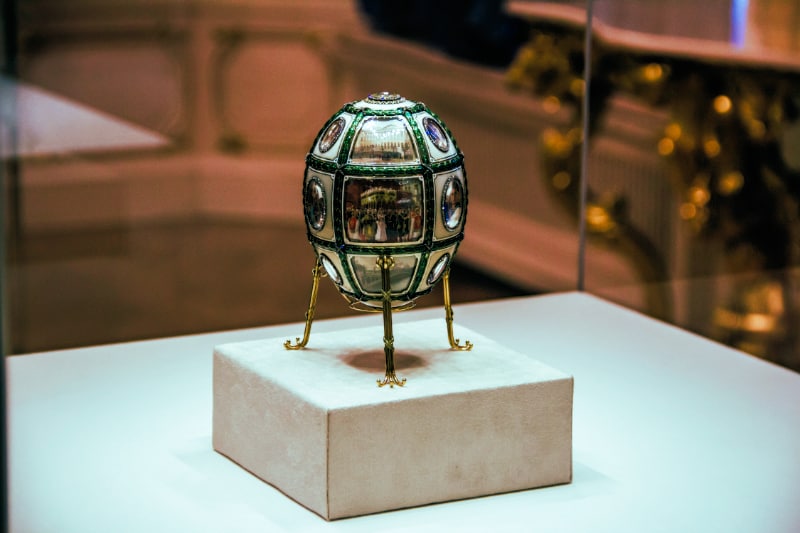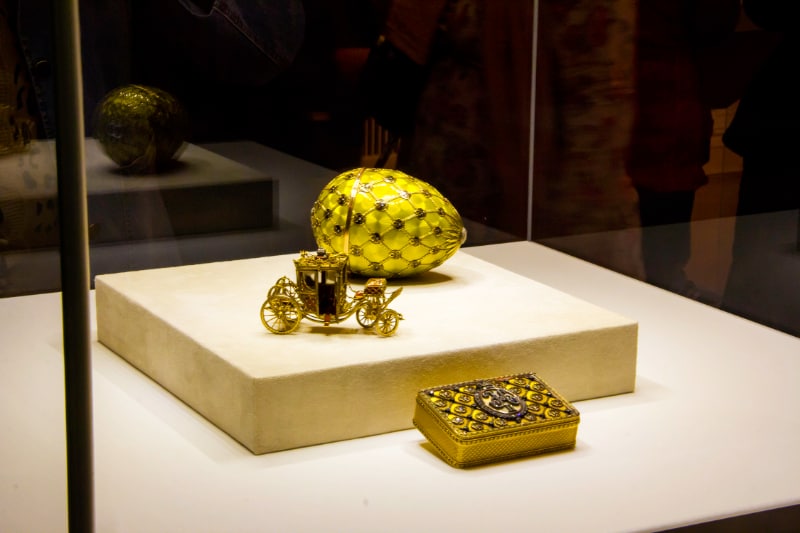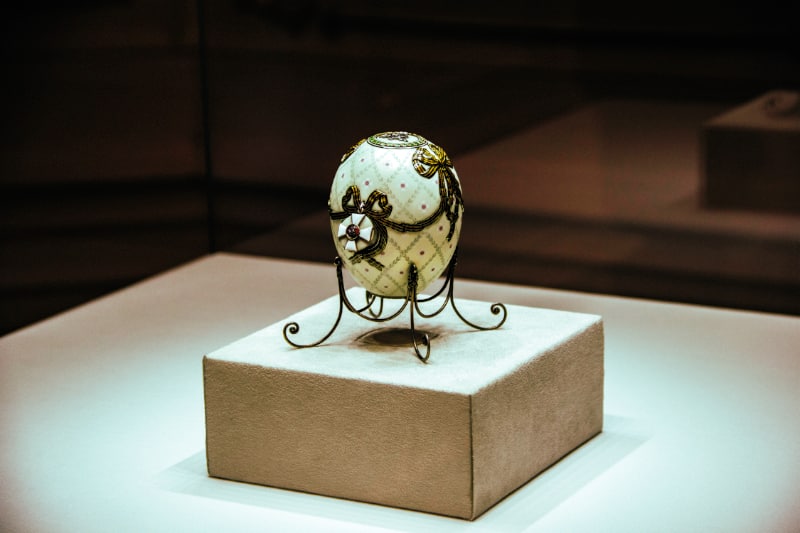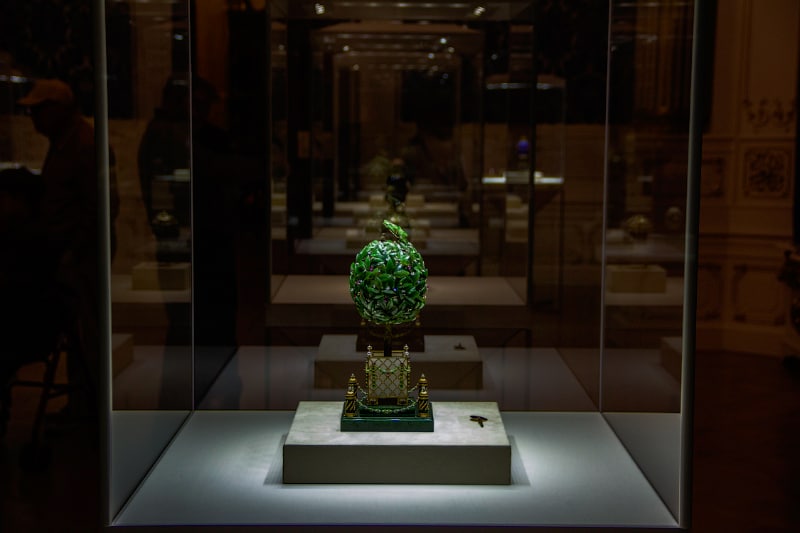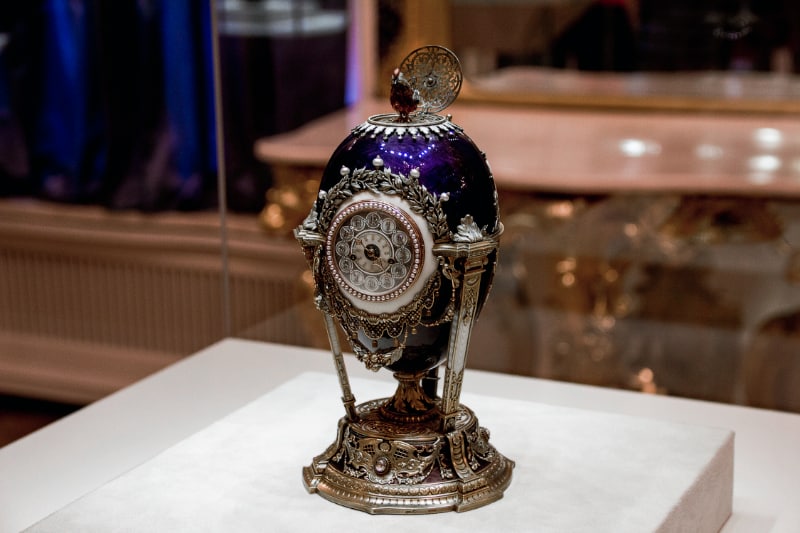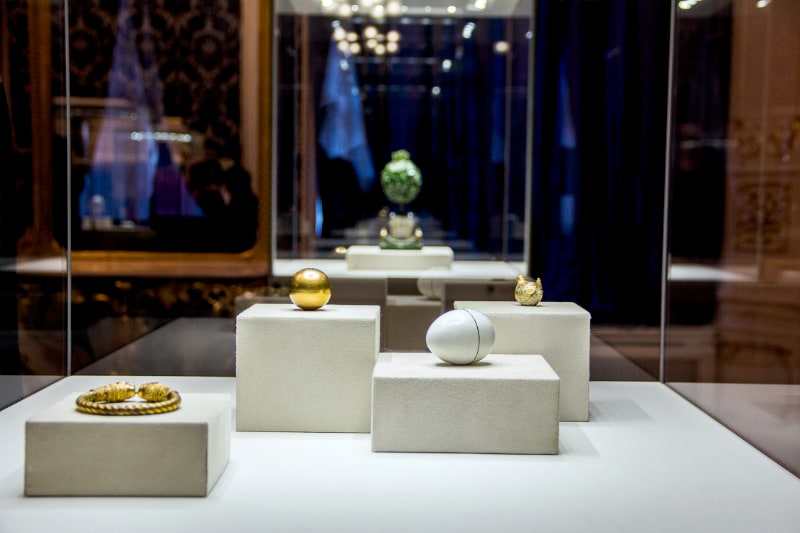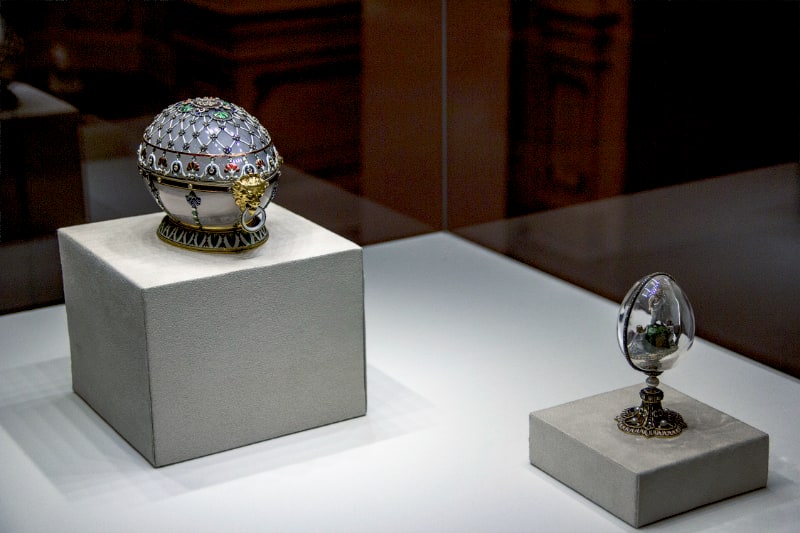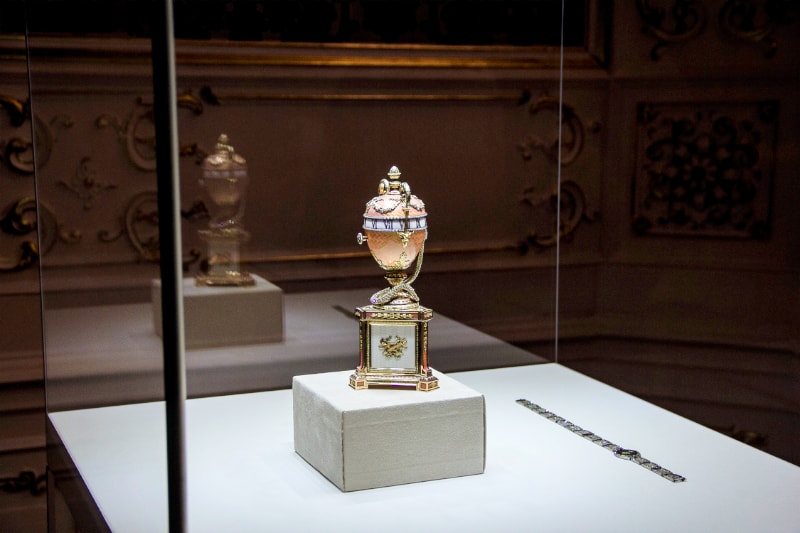Since 2013 when Faberge Museum opened in St. Petersburg, majority of visitors to our city crave to see the renowned Faberge egg collection.
Faberge Museum’s extensive and varied collection includes:
- About 4000 museum pieces, 80% of them are on display;
- The gems on display are 13 Faberge Eggs, 9 are unique Imperial Easter eggs.
- Over 200 Faberge jewelry items;
In terms of quality this Faberge egg collection is unrivaled as it includes the very first and last works (Hen Egg and St. George Egg), alongside with significant eggs marking events, important for the Tsar’s family: coronation (Faberge Coronation Egg), 15th anniversary of reign, etc. Besides, a viewer can compare two eggs created for one Easter but for different people – Nicholas II’s mother and his wife Alexandra. Absolutely different, they show Carl Faberge’s signature style: he carefully studied the tastes of the people for whom the presents were intended. And that was the key to his tremendous success.
Faberge Museum in St. Petersburg
Faberge Museum is relatively young: it accepted the first visitors in November 2013. But we can say it all started with Mr. Vekselberg, a Russian multimillionaire, purchasing the Russian collection assembled by Malcolm Forbes, the US media tycoon. At the deal price of 100 mln USD Mr. Vekselberg got the precious Faberge egg collection and the “Faberge-virus”.
Also in 2004 Mr. Vekselberg established a cultural historic foundation, named “Link of Times”. The main purpose of this organization became retrieving Russian culture and art objects that were lost or sold abroad. It’s amazing but none of Faberge Museum’s exhibits was purchased in Russia.
The location of the Museum is also interesting from the historic and architectural point of view: the Naryshkin-Shuvalov Palace is one of the best-preserved former noble mansions. The Link of Times has taken the palace in the long-term rent (for 49 years) under the condition of historic restoration. The restoration lasted 7 years and required around 30 mln US dollars.
Museum’s website
Faberge
What is a Faberge Egg?
The celebrated series of precious Ester eggs created by the House of Faberge from 1885 to 1917 are known as Faberge Eggs. In general, a Faberge Egg is a jewelry piece that is egg-shaped and has a surprise inside. Along with matryoshka dolls and onion domes, a Faberge egg is another symbol associated with Russia.
Faberge eggs were commissioned by the Russian Royal Family (known as Imperial Faberge Eggs) and also on private orders of Russian and European dignitaries and wealthy families, such as Duchess of Marlborough, Rothschild, Alfred Nobel, Prince Yusupov, Barbara Kelkh and many others. Thus, word collocation “Faberge Eggs” has become a synonym to extreme luxury and excessive wealth of old Russian aristocracy.The House of Faberge executed 50 Easter eggs by the tsar’s order. Their fates were different, their whereabouts are not always known. 7 masterpieces are considered lost. Only 19 Faberge Imperial Eggs are in Russia now: they belong to two top Faberge Egg collections under one roof: 10 are on view in the Moscow Kremlin and 9 are exhibited in Faberge Museum in St. Petersburg. The others are in private collections.
Faberge Egg Price
Imperial Faberge Eggs are very rare and therefore the only occasionally come to market. The last time an Imperial Faberge Egg surfaced was in 2014. It was Vacheron Constantine Egg that had been long considered lost, until an American scrap gold dealer bought it only for 14000 USD. It was sold for 33 mln USD to a private collection a few months later.
Initially the House of Faberge charged prices for precious Easter eggs depending on the materials and craftsmanship. So, according to the bills preserved, in 1897 the Faberge House quoted 5500 roubles for the Faberge Coronation Egg (approximate equivalent to $2800 measured in 1897 dollars). In 2004 Faberge Coronation Egg was esteemed between 18 and 24 mln USD at Sotheby’s. The maximum price quoted in the preserved Faberge bills was 24600 roubles for Faberge Winter Egg (“Ice Egg”), which equals to $12300 measured in 1913 dollars. In 2002 Faberge Winter Egg was sold at Sotheby’s for 9,6 mln USD. It is also known that after the Easter of 1914 the House of Faberge received from the Russian Imperial Court 59000 roubles in payment for 2 Easter eggs (Faberge Mosaic Egg and 200th Anniversary of the Romanov Dynasty). This makes almost 30000 roubles in the money of 1913 for each egg to add to the Imperial Faberge Egg collection.
Of course, a real Russian Faberge Egg costs millions, but copies vary in price depending upon the materials used. Nowadays Faberge Style eggs can be found ol-line. Prices very. The most expensive ones I’ve seen cost around 10000 USD, but I’m sure there are no limits.
Visit Faberge Museum with comfort.
It’s easy to arrange private guided tour to Faberge Museum!
Tours including Faberge Museum.

